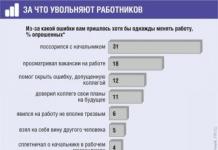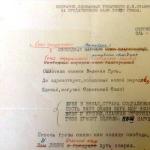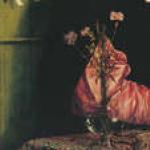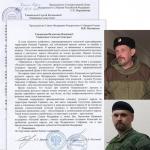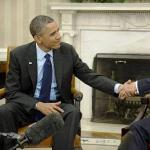Rechkalov Grigory Andreevich
One of the most successful Soviet aces, distinguished by his swiftness and indomitability.
Statistics
During the war he flew more than 450 combat missions, conducted 122 air battles, won, according to updated data, 61 victories personally (according to other sources, 56) and 4 in a group, for which he was awarded twice (in May 1943 and July 1944) title of Hero of the Soviet Union.
Biography
Born on February 9, 1920 in the village of Khudyakovo, Irbit district, Perm province, into a peasant family. At a young age he learned to fly at a local flying club. He entered and graduated from the military pilot school in Perm in 1939. After promotion to rank, the sergeant was sent to serve in the 55th Fighter Aviation Regiment in Kirovograd. He flew on the I-153 fighter.
Who was
During the war years, he grew up in the regiment (which became the 16th Guards in March 1942) from junior lieutenant to major. He flew out on attack missions, escorted attack aircraft, and for reconnaissance, but considered his main task to be conducting air battles with enemy aircraft, often conducting “free hunts.” He finished combat operations as an inspector of piloting techniques in the 9th Guards Fighter Division, commanded by his teacher, three times Hero of the Soviet Union, Colonel A.I. Pokryshkin. After the war he continued to serve in the Air Force. In 1951 he graduated from the Air Force Academy in Monino. Since 1959 in reserve, he lived first in Moscow, since 1980 - in the city of Zhukovsky, Moscow region. He wrote books about military everyday life: “Visiting Youth”, “The Smoky Sky of War”, “In the Sky of Moldova”.
What is he famous for?
In his final years he fought on an Airacobra, decorated with numerous stars on the engine according to the number of victories won, and his own initials RGA, painted on the rear fuselage. According to the ace himself, what he most appreciated in his fighter was its excellent radio station, which allowed him to constantly maintain reliable radio contact with other pilots and the ground. Probably, no other Soviet ace personally has such a variety of types of officially shot down enemy aircraft as Rechkalov: Heinkel and Junkers bombers, Henschel and Junkers attack aircraft, Messerschmitt and Focke fighters. Wulf", liaison "physicallers", reconnaissance and transport personnel, as well as relatively rare trophies - the Italian "Savoy" and the Polish PZL-24, used by the Royal Romanian Air Force.



Battle sites
Fought on the Southern, North Caucasian, 1st, 2nd and 4th Ukrainian fronts.
Cases of manifestation of the highest degree of heroism
During the first two weeks of the battle in Kuban Art. Lieutenant Rechkalov personally shot down 8 enemy aircraft in air battles and was nominated for the title of Hero of the Soviet Union for the first time. He achieved his greatest success on October 1 and November 1, 1943, shooting down three Junkers-87 dive bombers on each of these days in the area of the Molochnaya River and north of Perekop.
Circumstances of death
State awards
Twice Hero of the Soviet Union was awarded the Order of Lenin, four Orders of the Red Banner, two Orders of the Red Star, the Order of Alexander Nevsky and the Order of the Patriotic War, 1st degree.
The future twice Hero of the Soviet Union, one of the best Soviet aces, Grigory Andreevich Rechkalov, was born on February 9, 1920 in the village of Khudyakovo, Irbitsky district, into an ordinary peasant family. At the end of 1937, on a Komsomol ticket, young Rechkalov went to a military pilot school in Perm, which he successfully graduated from in 1939. After distribution, Grigory, with the rank of junior lieutenant, is sent to serve in the 55th Fighter Aviation Regiment, which has given the country many famous pilots.
At the time Rechkalov joined the 55th IAP, it was equipped with I-153, I-16 and UTI-4 aircraft and was part of the 1st KOVO high-speed bomber brigade. In 1940, the regiment was transferred to the 20th mixed aviation division, which was part of the Air Force of the Odessa Military District. The regiment was located on the outskirts of the small town of Balti near the border with Romania.
On June 22, 1941, Grigory Rechkalov arrived at the disposal of his regiment from Odessa, where he passed a medical flight commission, which wrote him off from flying work; the pilot had color blindness and could not distinguish colors well. By that time, the first losses had already been noted in the regiment, and combat work was in full swing. Having reported his arrival to the unit and decommissioned from flights, Rechkalov immediately receives his first combat mission - to take documents to the neighboring unit in an I-153 fighter. The chief of staff of the regiment, Major Matveev, did not even pay attention to the doctors’ conclusions; there was no time for that. Thus, unexpectedly, a very difficult task was solved for the fighter pilot, which had tormented him all the way on the way to the regiment. On his first combat mission, Grigory Rechkalov met the enemy in battle, survived and was able to help out his comrade.
In the future, chance will intervene more than once in the fate of the ace pilot, which will provide him with the opportunity to return to the skies. Talking about them would take too much time. It is only worth saying that after a month of the war, having 3 downed German planes in his combat account, Rechkalov was seriously wounded in the leg and, wounded, brought his I-16 to the airfield, from where he was immediately transported to the hospital. At the hospital he undergoes a very complex operation on his right leg. This wound put him out of action for almost a year. In April 1942, having escaped from the reserve air regiment, where the pilot was retraining on the Yak-1, he returned to his hometown, now the 16th GvIAP.
From this moment on, a new stage of his flying career begins with the call sign “RGA”. Ahead of him awaits retraining for the American P-39 Airacobra fighter, the menacing sky of the Kuban, the first Golden Star of the Hero, fierce battles in the skies over Iasi, the second Golden Star and finally the sky of Berlin. This segment also included some confrontation with the famous Soviet ace Pokryshkin, which received an unexpected development after the end of the war and which they previously preferred not to talk about out loud.
Grigory Rechkalov went down in history as the most successful ace, having won the most victories on the P-39 Airacobra fighter. By the end of the war, his Cobra had 56 stars, which symbolized the pilot’s 53 personal and 3 group victories. Rechkalov was the second most successful Allied pilot. He had 61 personal victories and 4 group victories.
Among the German planes shot down by Grigory Rechkalov were:
30 Me-109 fighters;
5 FW-190 fighter
2 Me-110 fighters;
11 Ju-87 bombers
5 Ju 88 bombers
3 Ju 52 transport aircraft
2 He-111 bombers
2 light reconnaissance aircraft Fi 156
1 Hs 126 fighter-spotter
Conflict with Pokryshkin
For those who were interested in the history of the 55th IAP, which later turned into the 16th Guards Fighter Aviation Regiment, and subsequently the 9th GvIAD, which was commanded by Pokryshkin from July 1944, the strained relationship between the division commander and one of the best Soviet aces twice Hero of the Soviet Union Grigory Andreevich Rechkalov. At one time, the aviation community even waged serious debate on the vastness of the World Wide Web, trying to understand the nature of the relationship between the two famous Soviet aces. Many believed that the reasons lay in their aerial rivalry, while a variety of aspects of their combat interaction were taken into account.
Aces pilots of the 9th Guards Aviation Division at the Bell P-39 Airacobra fighter G.A. Rechkalova. From left to right: Alexander Fedorovich Klubov, Grigory Andreevich Rechkalov, Andrei Ivanovich Trud and commander of the 16th Guards Fighter Aviation Regiment Boris Borisovich Glinka.
Whether this is true or not, over time it began to seem that the strained relationship between the two pilots, which led to a serious conflict, was connected with their personal accounts of downed aircraft. These assumptions were confirmed by Rechkalov’s relatives, in particular his wife Anfisa and daughter Lyubov spoke about this. According to the daughter of the famous ace, after the end of the Great Patriotic War, Grigory Rechkalov, working with TsAMO documents, found 3 of his planes shot down in 1941 on the account of Alexander Pokryshkin. Having learned about this, he most likely called his immediate military superior and expressed everything he thought about him. Alexander Pokryshkin’s reaction was not long in coming; after this conversation, Rechkalov was forgotten, and access to the TsAMO archives was closed to him. Even another Soviet ace Georgy Golubev, who was Pokryshkin’s wingman and was friends with Rechkalov during the war, in his book “Paired with the Hundredth,” writes practically nothing about his friend during the war, building the entire narrative around Pokryshkin’s personality. According to the relatives of Grigory Rechkalov, he maintained his opinion that the 3 planes he shot down were attributed to Pokryshkin until his death in 1990.
Rechkalov’s personal combat account since 06/22/1941 opens with the following enemy aircraft shot down: on June 26 in the Ungheni area he shot down an Me-109 fighter, on June 27 an Hs 126 fighter-spotter and on July 11 a Ju 88 bomber. However, already a month after the start of the war, Grigory Rechkalov receives a serious wound in the leg. During a combat mission on July 26, 1941, to escort seven I-153s that flew out on an attack mission, Rechkalov was part of a flight of I-16 escort fighters. In the Dubossary area, when approaching the target, a group of aircraft comes under intense German anti-aircraft fire. During the shelling, Rechkalov was wounded; the hit on the plane was so strong and accurate that the fighter's rudder pedal was broken in half, and the pilot's foot was seriously damaged.
During the pilot's absence, many documents of the 55th IAP were destroyed during the retreat from Odessa. It is possible that Rechkalovo’s account was “zeroed” also because during his almost year-long absence the regiment transferred to another unit, while information about the pilot’s victories remained in the documents of the 20th Mixed Air Division. The report on the combat work of the new 16th Guards Aviation Regiment was already compiled in the reserve regiment, so there was nowhere to get data for 1941 from. This would be a fairly convincing version, if not for the fact that many pilots of the 55th IAP, even despite the burning of staff documents, the downed planes were recorded again and only the “returnee” Grigory Rechkalov had to start his combat journey from scratch. One way or another, until the end of his life Rechkalov was convinced that 3 victories of 1941 were taken from his combat account, which, by some coincidence, ended up in Pokryshkin’s account.
Bell P-39 "Airacobra"
Many years after the end of the war, Grigory Rechkalov was asked what he valued most in his P-39Q Airacobra fighter, on which he won so many victories: the power of the fire salvo, speed, engine reliability, visibility from the cockpit? To this question, Rechkalov noted that all of the above, of course, played a role and these advantages are important, but in his opinion, the most important thing in the American fighter was... the radio. According to him, the Cobra had excellent radio communication, rare at that time. Thanks to her, the pilots in the group could communicate with each other, as if on the phone. Anyone who saw anything in the air immediately reported it, so there were no surprises during the combat missions.
It is worth noting that the Airacobras have come a long way, constantly modernizing and improving, including taking into account the requirements of the Soviet side. To assemble and fly the fighters that were in the USSR, a special group of the Air Force Research Institute was created, which began a thorough study of the flight performance characteristics of the Airacobra, as well as eliminating various identified defects. The first versions of the P-39D were distinguished by inflated characteristics. For example, the speed at the ground was only 493 km/h, and at an altitude of 7000 m - 552 km/h, the maximum speed that the aircraft managed to reach at an altitude of 4200 m was 585 km/h. The higher the plane climbed, the lower its rate of climb became. At an altitude of 5000 meters it was 9.6 m/s, but at the ground it was already 14.4 m/s. The takeoff and landing characteristics of the fighter were also quite high. The plane's mileage was 350 meters, and the takeoff run was 300 meters.
The plane had a good flight range, which was equal to 1000 km. and could stay in the sky for 3.5 hours. The fighter's fairly good characteristics at low altitudes allowed it to effectively act as an escort vehicle for Soviet Il-2 attack aircraft and protect them from German fighters, as well as successfully fight German dive bombers and work quite confidently against ground targets. Over time, the characteristics of the fighter only grew and were brought to a very high level.
It is worth noting that American engineers, designers and workers were sympathetic to the proposals coming from the Soviet Air Force, which related to improving the design of the fighter. Bell company specialists, when coming to the USSR, visited military units and tried to study the circumstances and causes of accidents on the spot. In turn, Soviet engineers and pilots were also sent to the United States, where they assisted the Bell company in improving the P-39 Airacobra fighter. The largest center of Soviet aviation science, the Central Aerohydrodynamic Institute named after. Zhukovsky known by the abbreviation TsAGI.
Work to improve the aircraft was largely based on improving engine performance and reducing the take-off weight of the fighter. Already from the P-39D-2 version, the aircraft began to be equipped with a new Allison V-1710-63 engine, the power of which, without turning on the afterburner mode, was 1325 hp. To reduce the take-off weight of the fighter, the ammunition load of wing machine guns was reduced from 1000 to 500 rounds per barrel, and for fuselage machine guns from 270 to 200 rounds per barrel. Also, the hydraulic system for reloading the gun was completely removed from the aircraft; it could only be reloaded at the airfield. In addition, units that were installed on the P-40 Kittyhawk aircraft, which also arrived in the USSR under Lend-Lease, were installed in the air, fuel and oil systems.
In 1942, the most massive and best modification of the P-39Q fighter went into production; Rechkalov flew the P-39Q-15 fighter. Unlike other models, the fighter with the letter Q had 2 large-caliber 12.7-mm machine guns installed instead of 4 wing-mounted rifle-caliber machine guns. Among the fighters of this series there were also special lightweight models, for example, the P-39Q-10 version was distinguished by the fact that it had no wing machine guns completely.

improvised anti-aircraft crew: Alexander Pokryshkin and Grigory Rechkalov.

Probably, Rechkalov’s “Cobra” was the most “painted”. photographers, as we see, loved her very much)
“Rechkalov won his first victory on June 26, 1941 on the I-153 Chaika biplane, shooting down a Messer with a volley of Eres, who considered him easy prey. He increased his combat score by flying the I-16, was seriously wounded, but returned to duty, fought on “yaks” and “airacobras”, received his first Gold Star for an air battle in the Kuban, where in just a month and a half he “killed” 17 German aircraft, and the second - in the summer of ’44, when he brought the count of personal victories to fifty. even among the fearless “Stalinist falcons”, Rechkalov never shied away from battle, and his “Airacobra” stood out with its defiantly bright coloring - a red propeller spinner, seven-row victory stars on the nose, the formidable initials RGA on the rear fuselage..."
The future twice Hero of the Soviet Union, one of the best Soviet aces, Grigory Andreevich Rechkalov, was born on February 9, 1920 in the village of Khudyakovo, Irbitsky district, into an ordinary peasant family. At the end of 1937, on a Komsomol ticket, young Rechkalov went to a military pilot school in Perm, which he successfully graduated from in 1939. After distribution, Grigory, with the rank of junior lieutenant, is sent to serve in the 55th Fighter Aviation Regiment, which has given the country many famous pilots.
At the time Rechkalov joined the 55th IAP, it was equipped with I-153, I-16 and UTI-4 aircraft and was part of the 1st KOVO high-speed bomber brigade. In 1940, the regiment was transferred to the 20th mixed aviation division, which was part of the Air Force of the Odessa Military District. The regiment was located on the outskirts of the small town of Balti near the border with Romania.
On June 22, 1941, Grigory Rechkalov arrived at the disposal of his regiment from Odessa, where he passed a medical flight commission, which wrote him off from flying work; the pilot had color blindness and could not distinguish colors well. By that time, the first losses had already been noted in the regiment, and combat work was in full swing. Having reported his arrival to the unit and decommissioned from flights, Rechkalov immediately receives his first combat mission - to take documents to the neighboring unit in an I-153 fighter. The chief of staff of the regiment, Major Matveev, did not even pay attention to the doctors’ conclusions; there was no time for that. Thus, unexpectedly, a very difficult task was solved for the fighter pilot, which had tormented him all the way on the way to the regiment. On his first combat mission, Grigory Rechkalov met the enemy in battle, survived and was able to help out his comrade.
In the future, chance will intervene more than once in the fate of the ace pilot, which will provide him with the opportunity to return to the skies. It is only worth saying that after a month of the war, having 3 downed German planes in his combat account, Rechkalov was seriously wounded in the leg and, wounded, brought his I-16 to the airfield, from where he was immediately transported to the hospital. At the hospital he undergoes a very complex operation on his right leg. This wound put him out of action for almost a year. In April 1942, having escaped from the reserve air regiment, where the pilot was retraining on the Yak-1, he returned to his hometown, now the 16th GvIAP.
From this moment on, a new stage of his flying career begins with the call sign “RGA”. Ahead of him awaits retraining for the American P-39 Airacobra fighter, the menacing sky of the Kuban, the first Golden Star of the Hero, fierce battles in the skies over Iasi, the second Golden Star and finally the sky of Berlin. This segment also included some confrontation with the famous Soviet ace Pokryshkin, which received an unexpected development after the end of the war and which they previously preferred not to talk about out loud.
Grigory Rechkalov went down in history as the most successful ace, having won the most victories on the P-39 Airacobra fighter. By the end of the war, his Cobra had 56 stars, which symbolized the pilot’s 53 personal and 3 group victories. Rechkalov was the second most successful Allied pilot. He had 61 personal victories and 4 group victories.
Among the German planes shot down by Grigory Rechkalov were:
30 Me-109 fighters;
5 FW-190 fighter
2 Me-110 fighters;
11 Ju-87 bombers
5 Ju-88 bombers
3 Ju-52 transport aircraft
2 He-111 bombers
2 light reconnaissance aircraft Fi-156
1 Hs-126 spotter fighter

By June 1944, deputy regiment commander Rechkalov made 415 combat missions, participated in 112 air battles and personally shot down 48 enemy aircraft and 6 in the group.
In total, during the war, Rechkalov flew 450 combat missions and 122 air battles. Data on downed aircraft vary. According to some sources, 56 aircraft and 6 aircraft in the group were shot down. According to M. Bykov, Rechkalov shot down 61 enemy aircraft.
After the war, Grigory Rechkalov continued to serve in the air force and graduated from the Air Force Academy in 1951. In 1959 he was transferred to the reserve. Lived in Moscow, since 1980 - in the city of Zhukovsky, Moscow region. Died on December 22, 1990 in Moscow. He was buried in the village of Bobrovsky (Sysertsky district, Sverdlovsk region).
(February 9, 1920 - December 22, 1990) - twice Hero of the Soviet Union, fighter pilot, major general of aviation.....
 |
|||
Grigory Andreevich Rechkalov(February 9 or December 20) - twice Hero of the Soviet Union (1943, 1944). Ace pilot of the Great Patriotic War, Major General of Aviation.
Biography
Grigory Andreevich Rechkalov was born in the village of Khudyakovo, Irbitsky district, Perm province (now the village of Zaykovo, Irbitsky district, Sverdlovsk region) into a peasant family. When Grigory Rechkalov was in school, his family moved to the village of Bobrovka near Sverdlovsk, and he completed 6 classes there at a school in the village of Bolshoy Istok. At the age of 14 he began working as an electrician at a local mill. Later he moved to Sverdlovsk and entered the factory apprenticeship school of the Verkh-Isetsky plant. At the same time, Rechkalov began studying in a gliding circle.
The day before the start of the war, Rechkalov underwent a medical flight commission and was rejected due to discovered color blindness. However, on June 22, when he returned to the unit, the regimental chief of staff gave him an urgent task to deliver documents and did not even look at the medical report. At the beginning of the war, he flew the I-153 Chaika fighter. He scored his first aerial victory on June 27, shooting down an Me-109 with a rocket. Already in the first month of the war, Grigory Rechkalov shot down 3 enemy planes, was wounded himself, but brought the plane to the airfield. He was sent to a hospital, and then to a reserve aviation regiment, to master the Yak-1 aircraft, but in April 1942 he fled to his regiment, which by that time had received the rank of Guards and became known as the 16th Guards Fighter Aviation Regiment (16 GvIAP) .
In the regiment he mastered the American Airacobra fighter. Since the spring of 1943, the regiment entered into battles with the enemy in the Kuban. In the first two weeks of fighting, Grigory Rechkalov shot down 19 enemy aircraft, and in three combat missions he shot down 2 aircraft, and in one - 3.
By June 1944, deputy regiment commander Rechkalov made 415 combat missions, participated in 112 air battles and personally shot down 48 enemy aircraft and 6 in the group.
In total, during the war, Rechkalov flew 450 combat missions and 122 air battles. Data on downed aircraft vary. According to some sources, 56 aircraft and 6 aircraft in the group were shot down. According to M. Bykov, Rechkalov shot down 61+4 enemy aircraft.
After the war, Grigory Rechkalov continued to serve in the air force and graduated from the Air Force Academy in 1951. In 1959 he was transferred to the reserve. Lived in Moscow, since 1980 - in the city of Zhukovsky, Moscow region. Died on December 20, 1990 in Moscow. He was buried next to his mother in the cemetery of the village of Bobrovsky, Sysert urban district, Sverdlovsk region.
List of aerial victories
The award lists do not include 3 aerial victories Rechkalov won in 1941 (due to the loss of documents of the 55th Fighter Aviation Regiment for that period). However, these victories are reflected in the documents of the 20th Mixed Air Division, which gives every reason to include them in the pilot’s combat account.
| List of aerial victories of G. A. Rechkalov | |||
|---|---|---|---|
| No. | Date of victory | Aircraft type | Place of victory |
| 1 | 26.06.1941 | Me-109 | Ungheni |
| 2 | 27.06.1941 | Khsh-126 | eastern Boksha |
| 3 | 11.07.1941 | Yu-88 | Balta |
| 4 | 25.05.1942 | Me-110 | Izyum district |
| 5 | 27.05.1942 | Me-110 | Raisin |
| ** | 02.07.1942 | FV-189 | Podgorodnoe |
| 6 | 09.07.1942 | Me-109 | Birch bark |
| 7 | 09.07.1942 | Me-109 | Zolotarevka |
| 8 | 09.07.1942 | Me-109 | Zolotarevka |
| 9 | 11.04.1943 | Me-109 | north Abinskaya |
| 10 | 12.04.1943 | Me-109 | eastern Trinity |
| 11 | 15.04.1943 | Yu-88 | Gostogaevsky - Nikolaevsky |
| 12 | 16.04.1943 | Me-109 | Abinskaya |
| 13 | 17.04.1943 | Me-109 | Myskhako |
| 14 | 21.04.1943 | Me-109 | Tsemes Bay |
| 15 | 21.04.1943 | Me-109 | south Novorossiysk |
| 16 | 29.04.1943 | Me-109 | Grateful |
| 17 | 04.05.1943 | Me-109 | south Neberdzhaevskaya |
| 18 | 04.05.1943 | Me-109 | height 151.6 (Kuban) |
| ** | 04.05.1943 | Me-109 | Sementsovsky |
| 19 | 05.05.1943 | Me-109 | zap. Crimean |
| 20 | 06.05.1943 | Me-109 | zap. Neberdzhaevskaya |
| 21 | 08.05.1843 | Me-109 | zap. Nizhnebakanskaya |
| 22 | 08.05.1943 | Yu-87 | zap. Verkhnebakanskaya |
| 23 | 14.05.1943 | Me-109 | north-west Neberdzhaevskaya |
| 24 | 28.05.1943 | Me-109 | south Kyiv |
| 25 | 16.08.1943 | Me-109 | north Ivanovsky |
| 26 | 17.08.1943 | Me-109 | south Krasnopolye |
| ** | 23.08.1943 | Xe-111 | Dmitrievka |
| ** | 23.08.1943 | Xe-111 | Dmitrievka |
| 27 | 26.08.1943 | Yu-88 | south Kvashino |
| 28 | 29.08.1943 | Me-109 | eastern Novospassky |
| 29 | 29.08.1943 | Me-109 | eastern Marfinskaya |
| 30 | 30.08.1943 | Yu-87 | south Novo-Khreschatyk |
| 31 | 02.09.1943 | Me-109 | Kalinin |
| 32 | 19.09.1943 | Xe-111 | north Melitopol |
| 33 | 26.09.1943 | Me-109 | Big Tokmak |
| 34 | 01.10.1943 | Yu-87 | Dmitrievka |
| 35 | 01.10.1943 | Yu-87 | Karlsrus |
| 36 | 01.10.1943 | Yu-87 | Glad |
| 37 | 16.10.1943 | Yu-88 | zap. Nogaisk |
| 38 | 24.10.1943 | Me-109 | north Mikhailovka |
| 39 | 24.10.1943 | Me-109 | Burchak |
| 40 | 26.10.1943 | Yu-88 | north-west Merry |
| 41 | 01.11.1943 | Yu-87 | southwest Perekop |
| 42 | 01.11.1943 | Yu-87 | Perekop |
| 43 | 01.11.1943 | Yu-87 | north Budennovka |
| 44 | 01.12.1943 | Yu-87 | north-west Chuchak |
| 45 | 08.12.1943 | Yu-52 | southwest Tender's braid |
| 46 | 12.12.1943 | Yu-52 | Adzhalyk estuary |
| 47 | 29.12.1943 | Xe-111 | south Odessa |
| 48 | 29.12.1943 | Phi-156 | Benefit |
| 49 | 30.05.1944 | Me-109 | Tautoshti |
| 50 | 31.05.1944 | FV-190 | north-east Alien Water |
| 51 | 31.05.1944 | Phi-156 | southeast Porcesti |
| 52 | 03.06.1944 | Yu-87 | Bogonos |
| 53 | 03.06.1944 | Me-109 | Bogonos |
| 54 | 16.07.1944 | Yu-87 | south env. Dry |
| 55 | 22.07.1944 | FV-190 | north-west Zamość |
| 56 | 02.08.1944 | FV-190 | Yasyany |
| 57 | 31.08.1944 | Me-109 | Ostrovets |
| 58 | 24.10.1944 | Yu-52 | Zarnowice |
| 59 | 26.01.1945 | Me-109 | Brande |
| 60 | 22.02.1945 | FV-190 | north Krummels |
| 61 | 22.02.1945 | FV-190 | south Schadefelde |
Total aerial victories: 61+4
combat sorties - more than 420
air battles - 122
** - group victories
Awards
- Twice Hero of the Soviet Union (05/24/1943, 07/01/1944);
- four Orders of the Red Banner;
- Order of the Patriotic War, 1st degree;
- medal "For victory over Germany in the Great Patriotic War of 1941-1945" ;
- anniversary medal "Twenty years of Victory in the Great Patriotic War 1941-1945" ;
- anniversary medal "Thirty years of Victory in the Great Patriotic War 1941-1945" ;
- anniversary medal "Forty years of Victory in the Great Patriotic War of 1941-1945" ;
- other USSR medals;
- honorary citizen of the city of Balti and other cities.
Memory
Essays
- Grigory Rechkalov.. - Chisinau: Cartea Moldovenasca, 1967, 1979. - 247 p. - 15,000 copies.
- Visiting youth. M., 1968.
- The smoky sky of war. Sverdlovsk, 1968.
- Grigory Rechkalov. The burning sky of 1941. - Yauza, Eksmo, 2008. - 496 p. - (In air battles). - 5100 copies. - ISBN 978-5-699-25675-4.
- Grigory Rechkalov. 1941. The Burning Sky of War. - Yauza, Eksmo, 2009. - 496 p. - (The greatest Soviet aces). - 3000 copies. - ISBN 978-5-699-35350-7.
see also
Write a review of the article "Rechkalov, Grigory Andreevich"
Notes
Literature
- Bykov M. Yu. Aces of the Great Patriotic War. - M.: Yauza; Eksmo, 2007. - ISBN 978-5-699-20526-4.
Links
 . Website "Heroes of the Country".
. Website "Heroes of the Country".
- .
Excerpt characterizing Rechkalov, Grigory Andreevich
- That's how it is! - said Rostov.“Well, yes, it’s all nothing,” Natasha continued to chatter. - Why is Denisov good? – she asked.
- Good.
- Well, goodbye, get dressed. Is he scary, Denisov?
- Why is it scary? – asked Nicholas. - No. Vaska is nice.
- You call him Vaska - strange. And that he is very good?
- Very good.
- Well, come quickly and drink tea. Together.
And Natasha stood on tiptoe and walked out of the room the way dancers do, but smiling the way only happy 15-year-old girls smile. Having met Sonya in the living room, Rostov blushed. He didn't know how to deal with her. Yesterday they kissed in the first minute of the joy of their date, but today they felt that it was impossible to do this; he felt that everyone, his mother and sisters, looked at him questioningly and expected from him how he would behave with her. He kissed her hand and called her you - Sonya. But their eyes, having met, said “you” to each other and kissed tenderly. With her gaze she asked him for forgiveness for the fact that at Natasha’s embassy she dared to remind him of his promise and thanked him for his love. With his gaze he thanked her for the offer of freedom and said that one way or another, he would never stop loving her, because it was impossible not to love her.
“How strange it is,” said Vera, choosing a general moment of silence, “that Sonya and Nikolenka now met like strangers.” – Vera’s remark was fair, like all her comments; but like most of her remarks, everyone felt awkward, and not only Sonya, Nikolai and Natasha, but also the old countess, who was afraid of this son’s love for Sonya, which could deprive him of a brilliant party, also blushed like a girl. Denisov, to Rostov’s surprise, in a new uniform, pomaded and perfumed, appeared in the living room as dandy as he was in battle, and as amiable with ladies and gentlemen as Rostov had never expected to see him.
Returning to Moscow from the army, Nikolai Rostov was accepted by his family as the best son, hero and beloved Nikolushka; relatives - as a sweet, pleasant and respectful young man; acquaintances - like a handsome hussar lieutenant, a deft dancer and one of the best grooms in Moscow.
The Rostovs knew all of Moscow; this year the old count had enough money, because all his estates had been re-mortgaged, and therefore Nikolushka, having got his own trotter and the most fashionable leggings, special ones that no one else in Moscow had, and boots, the most fashionable, with the most pointed socks and little silver spurs, had a lot of fun. Rostov, returning home, experienced a pleasant feeling after some period of time trying on himself to the old living conditions. It seemed to him that he had matured and grown very much. Despair for failing to pass an exam according to the law of God, borrowing money from Gavrila for a cab driver, secret kisses with Sonya, he remembered all this as childishness, from which he was now immeasurably far away. Now he is a hussar lieutenant in a silver mentic, with a soldier's George, preparing his trotter to run, together with famous hunters, elderly, respectable. He knows a lady on the boulevard whom he goes to see in the evening. He conducted a mazurka at the Arkharovs’ ball, talked about the war with Field Marshal Kamensky, visited an English club, and was on friendly terms with a forty-year-old colonel whom Denisov introduced him to.
His passion for the sovereign weakened somewhat in Moscow, since during this time he did not see him. But he often talked about the sovereign, about his love for him, making it felt that he was not telling everything yet, that there was something else in his feelings for the sovereign that could not be understood by everyone; and with all my heart he shared the general feeling of adoration in Moscow at that time for Emperor Alexander Pavlovich, who in Moscow at that time was given the name of an angel in the flesh.
During this short stay of Rostov in Moscow, before leaving for the army, he did not become close, but on the contrary, broke up with Sonya. She was very pretty, sweet, and obviously passionately in love with him; but he was in that time of youth when there seems to be so much to do that there is no time to do it, and the young man is afraid to get involved - he values his freedom, which he needs for many other things. When he thought about Sonya during this new stay in Moscow, he said to himself: Eh! there will be many more, many more of these, somewhere, still unknown to me. I’ll still have time to make love when I want, but now there’s no time. In addition, it seemed to him that there was something humiliating for his courage in female society. He went to balls and sororities, pretending that he was doing it against his will. Running, an English club, carousing with Denisov, a trip there - that was another matter: it was befitting of a fine hussar.
At the beginning of March, the old Count Ilya Andreich Rostov was preoccupied with arranging a dinner at an English club to receive Prince Bagration.
The Count in a dressing gown walked around the hall, giving orders to the club housekeeper and the famous Theoktistus, the senior cook of the English club, about asparagus, fresh cucumbers, strawberries, veal and fish for Prince Bagration's dinner. The Count, from the day the club was founded, was its member and foreman. He was entrusted by the club with arranging a celebration for Bagration, because rarely did anyone know how to organize a feast in such a grand manner, hospitably, especially because rarely did anyone know how and want to contribute their money if they were needed to organize the feast. The cook and housekeeper of the club listened to the count's orders with cheerful faces, because they knew that under no one else could they profit better from a dinner that cost several thousand.
- So look, put scallops, scallops in the cake, you know! “So there are three cold ones?...” asked the cook. The Count thought about it. “No less, three... mayonnaise times,” he said, bending his finger...
- So, will you order us to take large sterlets? - asked the housekeeper. - What can we do, take it if they don’t give in. Yes, my father, I forgot. After all, we need another entrée for the table. Ah, my fathers! “He grabbed his head. - Who will bring me flowers?
- Mitinka! And Mitinka! “Ride off, Mitinka, to the Moscow region,” he turned to the manager who came in at his call, “jump off to the Moscow region and now tell Maximka to dress up the corvée for the gardener. Tell them to drag all the greenhouses here and wrap them in felt. Yes, so that I have two hundred pots here by Friday.
Having given more and more different orders, he went out to rest with the countess, but remembered something else he needed, returned himself, brought back the cook and the housekeeper, and again began to give orders. A light, masculine gait and the clanking of spurs were heard at the door, and a handsome, ruddy, with a black mustache, apparently rested and well-groomed from his quiet life in Moscow, entered the young count.
- Oh, my brother! “My head is spinning,” the old man said, as if ashamed, smiling in front of his son. - At least you could help! We need more songwriters. I have music, but should I invite the gypsies? Your military brethren love this.
“Really, daddy, I think Prince Bagration, when he was preparing for the Battle of Shengraben, bothered less than you do now,” said the son, smiling.
The old count pretended to be angry. - Yes, you interpret it, you try it!
And the count turned to the cook, who, with an intelligent and respectable face, looked observantly and affectionately at father and son.
- What are young people like, eh, Feoktist? - he said, - the old people are laughing at our brother.
“Well, Your Excellency, they just want to eat well, but how to assemble and serve everything is not their business.”
“Well, well,” the count shouted, and cheerfully grabbing his son by both hands, he shouted: “So that’s it, I got you!” Now take the pair of sleighs and go to Bezukhov, and say that the count, they say, Ilya Andreich sent to ask you for fresh strawberries and pineapples. You won't get it from anyone else. It’s not there, so you go in, tell the princesses, and from there, that’s what, go to Razgulay - Ipatka the coachman knows - find Ilyushka the gypsy there, that’s what Count Orlov was dancing with, remember, in a white Cossack, and bring him back here to me.
- And bring him here with the gypsies? – Nikolai asked laughing. - Oh well!…
At this time, with silent steps, with a businesslike, preoccupied and at the same time Christianly meek look that never left her, Anna Mikhailovna entered the room. Despite the fact that every day Anna Mikhailovna found the count in a dressing gown, every time he was embarrassed in front of her and asked to apologize for his suit.
“Nothing, Count, my dear,” she said, meekly closing her eyes. “And I’ll go to Bezukhoy,” she said. “Pierre has arrived, and now we’ll get everything, Count, from his greenhouses.” I needed to see him. He sent me a letter from Boris. Thank God, Borya is now at headquarters.
The Count was delighted that Anna Mikhailovna was taking on one part of his instructions, and ordered her to pawn a small carriage.
– You tell Bezukhov to come. I'll write it down. How is he and his wife? - he asked.
Anna Mikhailovna rolled her eyes, and deep sorrow was expressed on her face...
“Ah, my friend, he is very unhappy,” she said. “If what we heard is true, it’s terrible.” And did we think when we rejoiced so much at his happiness! And such a lofty, heavenly soul, this young Bezukhov! Yes, I feel sorry for him from the bottom of my heart and will try to give him the consolation that will depend on me.
- What is it? - asked both Rostov, the elder and the younger.
Anna Mikhailovna took a deep breath: “Dolokhov, Marya Ivanovna’s son,” she said in a mysterious whisper, “they say he has completely compromised her.” He took him out, invited him to his house in St. Petersburg, and so... She came here, and this head-off man is behind her,” said Anna Mikhailovna, wanting to express her sympathy for Pierre, but in involuntary intonations and a half-smile, showing sympathy for the head-off man, like she named Dolokhov. “They say that Pierre himself is completely overwhelmed by his grief.”
“Well, just tell him to come to the club and everything will go away.” The feast will be a mountain.
The next day, March 3, at 2 o'clock in the afternoon, 250 members of the English Club and 50 guests were expecting their dear guest and hero of the Austrian campaign, Prince Bagration, for dinner. At first, upon receiving news of the Battle of Austerlitz, Moscow was perplexed. At that time, the Russians were so accustomed to victories that, having received the news of defeat, some simply did not believe it, while others sought explanations for such a strange event in some unusual reasons. In the English Club, where everything that was noble, with correct information and weight gathered, in December, when news began to arrive, nothing was said about the war and about the last battle, as if everyone had agreed to remain silent about it. People who gave direction to the conversations, such as: Count Rostopchin, Prince Yuri Vladimirovich Dolgoruky, Valuev, gr. Markov, book. Vyazemsky, did not show up at the club, but gathered at home, in their intimate circles, and Muscovites, speaking from other people’s voices (to which Ilya Andreich Rostov belonged), were left for a short time without a definite judgment about the cause of war and without leaders. Muscovites felt that something was wrong and that it was difficult to discuss this bad news, and therefore it was better to remain silent. But after a while, as the jury left the deliberation room, the aces who gave their opinions in the club appeared, and everything began to speak clearly and definitely. The reasons were found for the incredible, unheard of and impossible event that the Russians were beaten, and everything became clear, and in all corners of Moscow the same thing was said. These reasons were: the betrayal of the Austrians, the poor food supply of the army, the betrayal of the Pole Pshebyshevsky and the Frenchman Langeron, the inability of Kutuzov, and (they said on the sly) the youth and inexperience of the sovereign, who entrusted himself to bad and insignificant people. But the troops, Russian troops, everyone said, were extraordinary and performed miracles of courage. Soldiers, officers, generals were heroes. But the hero of heroes was Prince Bagration, famous for his Shengraben affair and his retreat from Austerlitz, where he alone led his column undisturbed and spent the whole day repelling an enemy twice as strong. The fact that Bagration was chosen as a hero in Moscow was also facilitated by the fact that he had no connections in Moscow and was a stranger. In his person due honor was given to a fighting, simple, without connections and intrigues, Russian soldier, still associated with the memories of the Italian campaign with the name of Suvorov. In addition, in bestowing such honors on him, the dislike and disapproval of Kutuzov was best shown.
Ural pilot Hero Rechkalov Grigory Andreevich This brilliant air fighter was distinguished by a very contradictory and uneven character. Showing an example of courage, determination and discipline in one mission, in the next he could be distracted from the main task... This brilliant air fighter was distinguished by a very contradictory and uneven character. Having demonstrated an example of courage, determination and discipline in one mission, in the next he could be distracted from the main task and just as decisively begin the pursuit of a random enemy. His military fate was intertwined with the fate of A.I. Pokryshkin; he flew with him in the group, replaced him as a commander, then as a regiment commander. Alexander Ivanovich himself considered Rechkalov’s best qualities to be directness and frankness. Grigory Rechkalov was born on February 9, 1920 in the village of Khudyakovo, Irbitsky district, Perm province. He learned to fly at a local flying club. After being drafted into the Red Army, in 1938 he was admitted to the Perm Military Aviation School. The same one that 5 years before Rechkalov arrived there, his future commander, A.I. Pokryshkin, graduated. True, at that time the school graduated only aviation technicians. Having become a military pilot in 1939, Rechkalov served in units of the Red Army Air Force of the Odessa Military District.
Despite the fact that a medical examination determined that he was color blind, he won the right to continue serving and in 1941 was assigned to the 55th Fighter Wing with the rank of sergeant. The regiment was in Moldova and was re-equipped with new types of fighters during the summer. However, Rechkalov’s squadron was still armed with outdated I-153s. The beginning of the war saved Rechkalov from being written off from flying duty: the regiment commander ignored another doctor’s report that was disastrous for the pilot. Rechkalov made his first combat missions to attack enemy troops on an I-153 - a biplane with a blue tail number “13”. During the 1st week of the war, he flew about 30 attack missions and conducted 10 air battles. On the same machine he won his first victory - on June 27, 1941, shooting down one of the Me-109s attacking him with a salvo of rockets. Like Pokryshkin, he later said that his number 13 was “unlucky for the enemy.” On it, however, he suffered an accident due to engine failure: a connecting rod broke, and, having jacked up, Rechkalov almost died. After the accident, he began to fly the I-16. Soon Rechkalov shot down first a Polish PZL P-24 fighter (Romanian pilots flew them), and then a German Ju-88 bomber. On July 26, in the Dubossary area, while attacking an enemy column, he was wounded in the head and leg by fire from the ground, brought the car to his airfield and ended up in the hospital, underwent 3 operations there - the wound in the leg turned out to be quite serious. After a relative recovery, the pilot was assigned to a reserve regiment, but upon learning that it was equipped only with U-2 aircraft, he decisively turned around and went back to the district air force headquarters. There he achieved a meeting with the commander and managed to demand a referral for retraining in a fighter regiment. Only on March 30, 1942, having mastered the Yak-1 and having once again been in the hospital - the fragment was difficult to come out of, Rechkalov, by hook or by crook, returned to his regiment - the 55th IAP, which by that time had received the Guards name (16th Guards IAP). Here, on the Southern Front, he makes about a hundred combat sorties, participating in 20 battles, bringing the number of his victories to 6, shooting down 4 aircraft personally and 2 as part of a group. In December 1942, the regiment was recalled from the front to be re-equipped with American P-39 Airacobra fighters. By the spring of 1943, having received new vehicles in the North Caucasus, the regiment went to Kuban. On the first flight, Rechkalov and Pokryshkin each shot down one Me-109F in an air battle over the village of Krymskaya. On April 15, Rechkalov shot down a Ju-88 in a battle with a large group of bombers. The next day - Me-109 near the village of Kholmskaya and 2 more Me-109 until the 21st.
A. Klubov, G. Rechkalov, A. Trud and B. Glinka (from left to right). 8 days later, 6 Airacobras of captain A. Pokryshkin began a battle with a Ju-87 group accompanied by 4 Me-109 fighters over the front line. Pokryshkin attacked the bombers, and Rechkalov took up the fighters. As a result, both shot down 2 enemy aircraft and thwarted their attack. Only in the first 2 weeks of the battle in the Kuban, the deputy commander of the 1st squadron of the 16th GvIAP Guard, senior lieutenant G. R. Rechkalov personally shot down 8 enemy aircraft (7 Me-109 and 1 Ju-88) in air battles and was promoted to the rank Hero of the Soviet Union. Recalling those days, Grigory Andreevich later wrote: “There was not a single flight that we did not fight. At first the enemy acted impudently. A group will jump out, pile on, you look, first one, then another of our planes, catching fire, rushing towards the ground. But we quickly figured out the tactics of the German pilots and began to use new techniques: to fly in pairs rather than in flights, it is better to use radio for communication and guidance, to echelon groups of aircraft in a so-called “stack.” It was during these days that the “falcon strike”, developed by Alexander Ivanovich Pokryshkin, was born in our regiment.”
